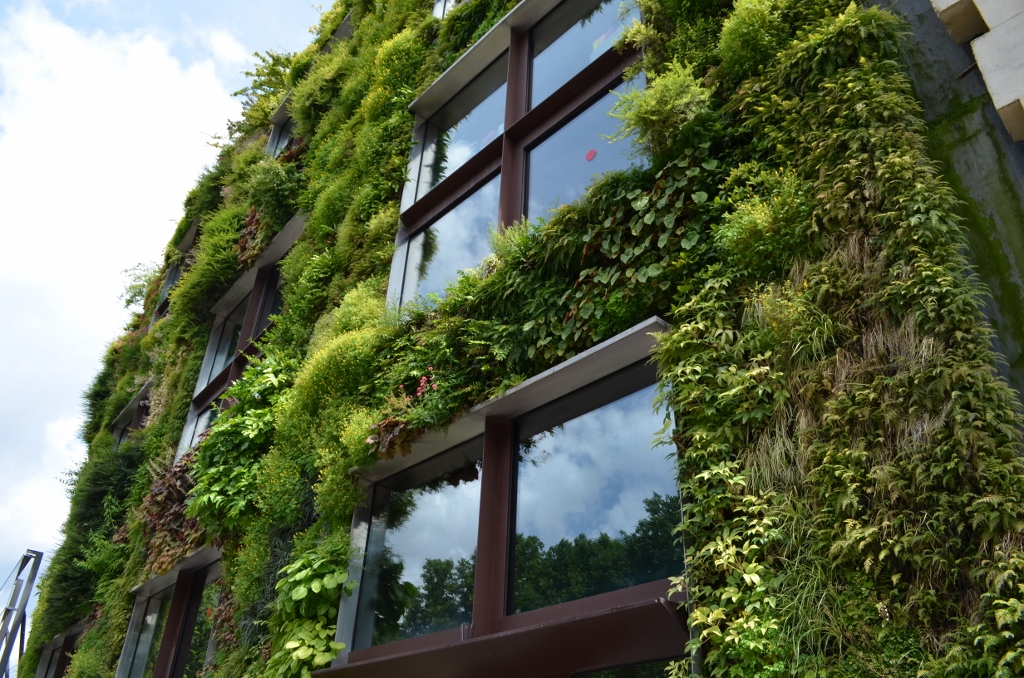can nature based solutions help india tackle its air pollution issues?

Nature-based Solutions (NbS) as defined as The International Union for Conservation of Nature (IUCN) , are the actions to protect, sustainably manage, and restore natural or modified ecosystems, that address societal challenges effectively and adaptively, simultaneously providing human well-being and biodiversity benefits.
Air pollution is one of the major urban environmental pollution issues.
According to WHO, outdoor air pollution leads to about 7 million premature deaths annually especially among the vulnerable populations like the lower income and the elderly.
Air pollution issue is largely prevalent in the rapidly growing urban areas. About 80% of the global urban population now lives in hazardous air quality conditions. As of 2020, more than half of the global population now lives in urban areas.Asia hosts majority of the rapidly growing cities in the world.
Closer to home, Delhi air pollution is one of the most widely known air pollution event. According to a research by IQ AirVisual, a Swiss based group that gathers air quality data globally, 22 out of the world’s 30 most polluted cities are in India.The main sources of outdoor air pollution include vehicular exhaust, industrial emissions and open burning.
There have been various efforts done by the Indian government to tackle the air pollution issue like tighter vehicle emissions’ norms, higher penalties for burning rubbish and better control of road dust but these efforts have given limited results. However, air pollution remains to be one of the most prevalent environmental issue in India. One of the upcoming and promising solution to tackle this issue includes nature-based solutions.
Since the beginning of time, natural ecosystems provide certain services that can be used as a solution for some man-made environmental problems. Nature-based solutions are using these ecosystem services for the benefit of human wellbeing and biodiversity.
There are two types of NbS:
1. Using the existing natural areas that provide ecosystem services
2.Constructing or designing ecosystem for a specific purpose.
NbS have a wide range of benefits for people and the environment, including temperature regulation, tackling pollutants like ozone and carbon monoxide, areas for recreation, increased aesthetic value and improved wellbeing. NbS have been proven to provide a multipurpose advantage for both the implementor of the solution as well as the environment around it.
NbS in developing urban resilience, is a pretty contemporary concept and has still not fully formulated and implemented in developing countries yet. India houses some of the major cities that show high rates of rural to urban migration, air pollution affects the vulnerable population such as the poor and elderly the most. These cities that provide little in the way of quality of life for the majority of their poor and disadvantaged households, nature based solutions can address basic service backlogsas they are easier to implement than engineering-driven solutionsgiven their ease of implementation and maintenance.
Nbs for issues like water management and resilience against nature disasters have been implemented to a certain extent in India howevernature-based solutions specifically for air pollution largely are yet unaddressed. However, nature-based solutions are widely installed in other countries especially in European cities and have shown promising results.
Few implemented NbS that can be easily implemented in India are:
- Vertical greening:
Vertical greening offers a promising solution to the highly populated Indian cities. Vertical greening is a general term for any vegetation cover on vertical surfaces, no matter where the roots are located. Vertical greening can be done along the walls of buildings. Some of the benefits include:
- Reduced air pollution by plants as they bind high proportions of the particulate matter and polluting gases and produce fresh air.
- Temperature regulation: A greened wall is of a lower temperature than a stone wall.
- Natural noise protection.

2. Moss wall/The city Tree:
Mosses have a large bio-active surface and hence they transpire more and actively reduce some pollutants. In a city with limited free space, these walls offer solution for efficient cleaning using smaller space. The services they provide are air filtering, heat stress mitigation and an area for recreation or relaxing.

3. Green roof
In cities with large number of buildings, green roofs pose a potential green solution to provide green space for different purposes and mitigate against urban heat islands. Green roofs are basically vegetation implemented on rooftops with the aim to. The main benefits include, temperature control through evapotranspiration, reduction of greenhouse gas emissions, increase in aesthetic value.

With the upcoming Smart cities initiatives, actively being implemented across cities in India, Nature based solutions offer promising answers to many of our pollution issues. Development has largely been portrayed as a human versus nature concept. It’s time foster our growth as a society, along with nature.
